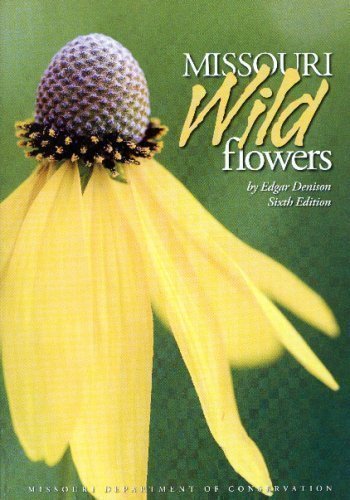As we swing into summer and flowering plants start blooming, I want to introduce you to the concept of wild harvesting, which is finding dye plants in the ditches along country roads and highways. Wild harvesting should not be done in your neighbors’ yards without permission nor in a protected area such as a park. Always park safely and watch the traffic, don’t over-harvest an area, and always watch for the wildlife sharing the ditch with you.
This is not an article about how to dye but I will share a couple of dyeing resources later.
On to (some of) the plants!
These are just a few of the plants you can use. Queen Anne’s lace is found throughout Missouri and dyes a yellow to green color. You can find it blooming from May to October. Be aware that some of its cousins will irritate your skin if the sap gets on you and then you expose that skin to sunlight. (Fun fact: you know it is Queen Anne’s lace if there is a bright red dot in the center. The red dot is the queen and all of the white is either her couriers or her lace collar OR it’s where she pricked herself while sewing.) Clip off a bucket of blooms, being considerate to leave about 75% of an area behind for reseeding and for other people to enjoy. I did not need to chop these flowers to get them to release their dye which produces a cream, a yellow or an orange color. You need at least the weight of blossoms to match the item you plan to dye.
 Using the book “Missouri Wildflowers” and my own memory of what I’ve seen in the ditches around here, I see that you can use common teasel as a blue dye. Common teasel has a lilac or lavender head similar to a thistle. However common teasel and its cousin, the cut-leaved teasel, are invasive plants threatening to edge out native plants. I’m using this space to warn you to NOT attempt to use this as a dye plant unless the flowers are still tender enough to not contain seeds. Don’t help either of these plants spread.
Using the book “Missouri Wildflowers” and my own memory of what I’ve seen in the ditches around here, I see that you can use common teasel as a blue dye. Common teasel has a lilac or lavender head similar to a thistle. However common teasel and its cousin, the cut-leaved teasel, are invasive plants threatening to edge out native plants. I’m using this space to warn you to NOT attempt to use this as a dye plant unless the flowers are still tender enough to not contain seeds. Don’t help either of these plants spread.
Bloodroot is a fairly abundant plant (remember to not over harvest!) that is easy to spot in the Spring. Cut up the roots to obtain the dye and don’t get the sap on your skin as it is an irritant. Depending on what chemicals you use to mordant the dyestuff, you may get a pink, a dark red or orange.
There are several sumacs in Missouri but my favorite is the smooth sumac as I like the jelly. You can get either black or red dye from the fruit, brown from the fallen leaves in Fall, and black from the bark and roots. Sumac is plentiful throughout Missouri but doesn’t usually grow in ditches because we mow them, so if you know of a good patch be sure and talk to the owners before harvesting.
Pokeberries or pokeweed will give you a lovely cranberry or raspberry color but it is not colorfast unless you have the right recipe. I found it on Mother Earth News and the dyer who supplied the directions is Columbia-native and fiber expert Carol Leigh. Pokeweed is toxic so don’t eat the lovely fruit. Squish them up and boil them!
One last one, and then I’m going to give you a selection of our books and other resources: ragweed! With a splash of ammonia in the end processes, you get a lovely sunshine yellow. Both common ragweed and giant ragweed can be gathered and the entire plant can be used. If you’d rather store it until later in the year, you can dry ragweed, Queen Anne’s Lace, bloodroot and the crunchy bits of sumac. Pokeberries and the fruit of the sumac can be frozen.
Resources
“Wild Color” by Jenny Dean has been one of my favorite books for dyeing. I have splashed dye on it, squished it open until the spine protested, written in it and followed many of her suggestions with great results. It has good images, and clear directions and is well-arranged.
If you love history, “A Weaver’s Garden” will be a treat for you. I also own this one and was very happy to find it here at Daniel Boone Regional Library. Published by Rita Buchanan in 1987, some of the directions are a bit dated for the modern dye kitchen. I think I used this one to start my first indigo dye pot.
 The “Complete Guide to Natural Dyeing” is a beautiful book that will inspire you. Author Eva Lambert’s directions for full-fabric dyeing are good, although some people think her descriptions of how to do things like batik are too skimpy to help the novice. This is one of many project books we have for our fiber-loving patrons so if you can’t borrow this one, check the catalog for others.
The “Complete Guide to Natural Dyeing” is a beautiful book that will inspire you. Author Eva Lambert’s directions for full-fabric dyeing are good, although some people think her descriptions of how to do things like batik are too skimpy to help the novice. This is one of many project books we have for our fiber-loving patrons so if you can’t borrow this one, check the catalog for others.
Abigail Booth describes how she lives the dyer’s life in her book “The Wild Dyer.” She forages but she also grows dye plants and I think you will be inspired by her work in this field.
If you want an in-depth video, Creativebug has a really good class for the basic process. Once you are comfortable with the process you can substitute your locally harvested plant material. You do need a library card to access this online resource.
Snakes!
So… along with warning you about not eating some of these plants, I want to mention other critters that live in our ditches. Remember you are in their home, and give them room to escape from you. Keep your eyes open and make lots of noise yourself so they have some warning you are there. American badgers, rodents and armadillos can live along roadways. Crayfish live in wet areas. Feral hogs have been known to use them as personal highways. Deer and raccoons cross them on their way to the other side. And yes, there are snakes, most of them harmless.
Back when I was actively ditch dyeing, I kept a bucket, paper bags, gloves and gardening scissors in my car all Spring and Summer. Often I only needed enough plant material to dye a hank of embroidery floss so my efforts didn’t really decimate the wildflowers. I encourage you to try this sometime, especially if you are an experienced dyer that is looking for a new way to experiment.
Image credit: Karen Arnold, Wild Flowers in Meadow via Public Domain Pictures (license)


